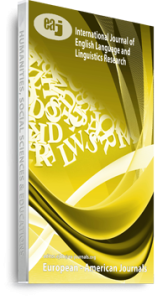This study analyses the actual manner of ‘the way how’, a newly established phraseological unit in contemporary English, from semantic, syntactic and corpus perspectives. Previous studies have widely acknowledged that ‘the way how’ has been considered a grammatically incorrect form. However, new findings of ‘the way how’ are as follows: (i) ‘the way how’ is not a minor error because it is observed in written English; (ii) ‘the way how’ has two syntactic patterns (‘the way how’ S + V and ‘the way how’ to do); (iii) in the case of ‘the way how’ S + V, ‘the way’ and ‘how’ are put together due to the analogy of the combinations of an antecedent and a relative adverb and are merged into ‘the way how’. In the case of ‘the way how’ to do, ‘the way to do’ and ‘how to do’ are put together because they are semantically similar; and (iv) historically, the number of times ‘the way how’ is used is increasing currently.
Keywords: A phraseological unit, Analogy, Merging, The Principle Of Linguistic Economy, The Way How

